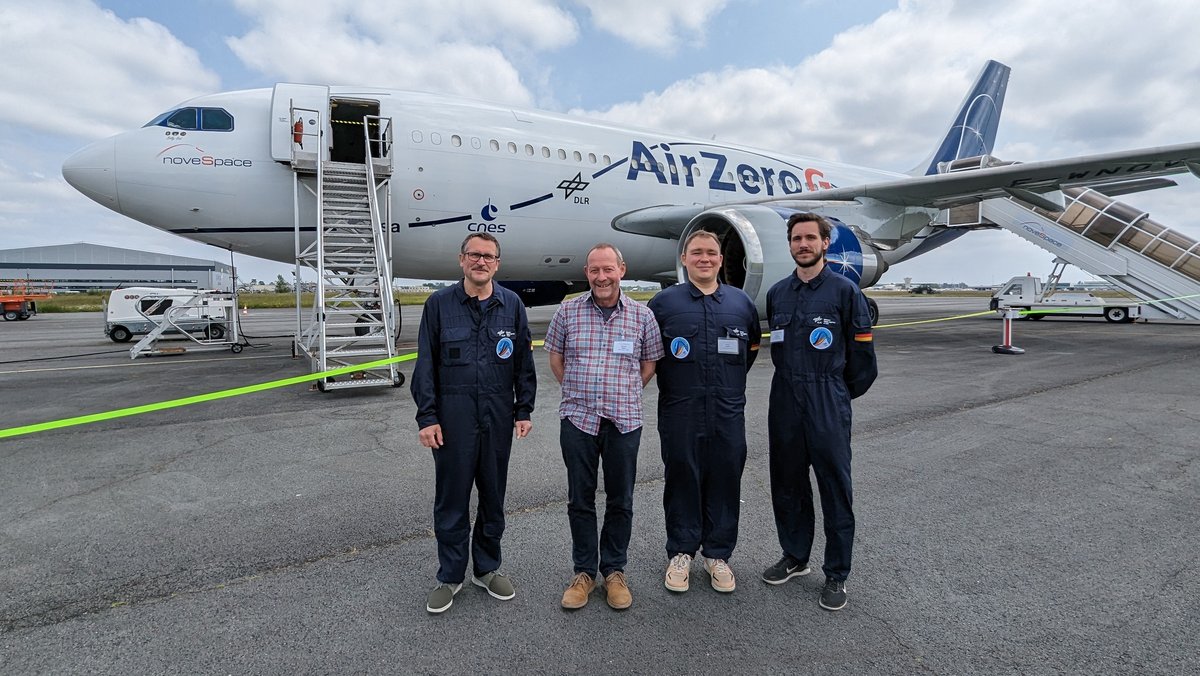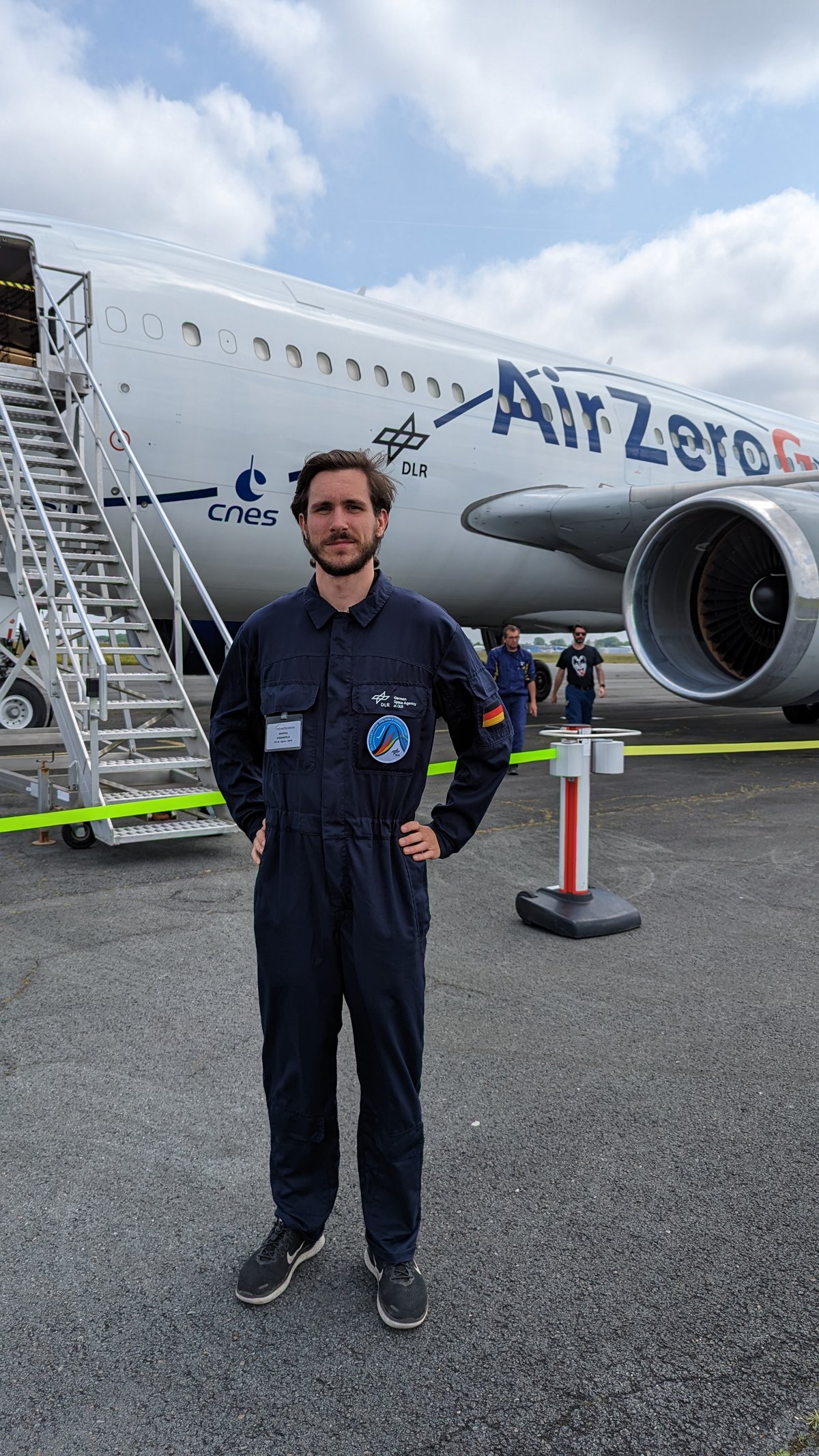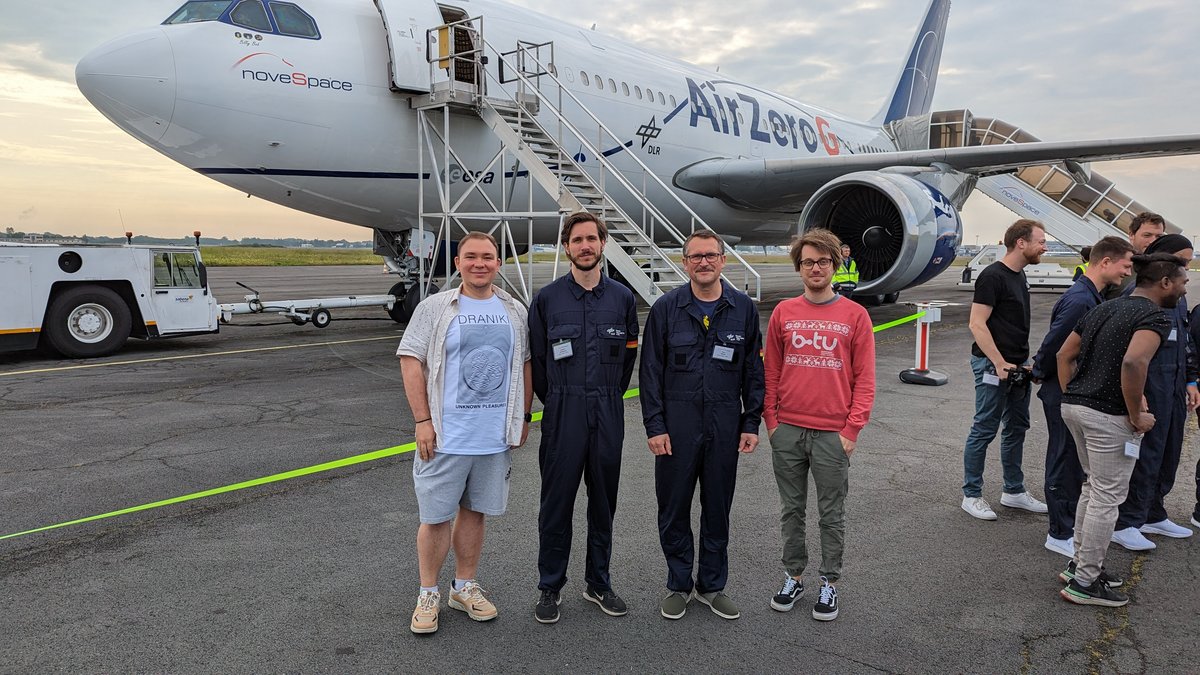With the airplane into weightlessness
Matthias Strangfeld is 28 years old and has never flown once in his life. The mechanical engineer at the Chair of Aerodynamics and Fluid Mechanics at the Brandenburg University of Technology Cottbus-Senftenberg (BTU) is now making up for it in a big way. He will take off for the first time in mid-May 2023. The Cottbus native is on his way to France for a research flight. There, in a few days, he will board an aircraft specially equipped for parabolic flights together with three other colleagues and an experiment at an altitude of 7,500 meters above the Atlantic Ocean.
The Airbus A310 ZERO-G of the French company Novespace will take off at full thrust on May 23, 2023: At an angle of attack of about 50 degrees - in a normal takeoff it is just 18 degrees - the aircraft with 40 men and women on board will reach an altitude of 7,500 meters. The aircraft is subjected to what is known as hypergravity, which is 1.8 times the Earth's gravitational pull. During this phase of the flight, which is the most strenuous for the human body, Matthias Strangfeld and his colleagues lie on the cabin floor of the aircraft.
Shortly afterwards, the pilot sets the engines to almost idle. Due to the momentum previously gained, the aircraft is hurled upward for almost 1,000 meters before it follows the path of a downward-open parabola and plunges into free fall. At the apex of the parabola at about 8,500 meters, the velocity is only about 380 kilometers per hour.
During the final phase of the upswing, at the highest point, when the aircraft tilts downward at an angle, Matthias Strangfeld floats weightlessly for a total of 22 seconds. "It was breathtaking," says the young scientist. "I felt as if I had jumped off the diving tower every time I did a parabola and was immersed in weightlessness."
Then the plane plunges into the depths. It's a fascinating moment before the pilot intercepts the plane under heavy thrust to return it to horizontal cruise. Now normal gravity prevails. For the body, the alternating stress of normal, hyper- and micro-gravity is a peak performance: blood rises to the head, the vessels contract, and nausea ensues as the body delivers information to the brain that doesn't add up: What the sense of balance in the inner ear and the eyes perceive in the curves, the head cannot put together into a coherent picture.
Nine out of ten passengers feel sick without an injection. The drug scopolamine suppresses nausea. What is an extreme strain on the body is a stroke of luck for the Cottbus scientists' experiment: "The results have fully met our expectations, and I will do a detailed analysis with the team in Cottbus," says Matthias Strangfeld. The experiment, on which the scientist is working together with a team of 4, is about the optimization of heat exchangers that operate in weightlessness, for example on a satellite. Inside, there is a dielectric fluid that is under the influence of an electric force field. When the fluid is subjected to an electric field and a temperature difference, a dielectro-phoretic (DEP) force is created that can produce movement of the fluid. "This effect can be used in the development and optimization of "heat" exchangers," says the mechanical engineer.
It takes three hours for the research flight to land and for Matthias Strangfeld to recover from the exhausting flight. "It took me a few minutes to get used to normal gravity after the changing gravitational conditions. I got through the flight very well and without nausea," he says. "But it was worth it in every fal." He expects to be back on board next year.
About the scientist
Matthias Strangfeld is a mechanical engineer specializing in automotive engineering. He has been interested in cars since he was a child. "My grandpa always had a lot of car magazines, which I always looked at with enthusiasm," he says. "Through my interest in motorsports, I learned about the field of aerodynamics." He wrote his bachelor's thesis at the Chair of Aerodynamics and Fluid Mechanics under Prof. Dr. Christoph Egbers. In the thesis, he investigated turbulent pipe flows at the Large Pipe Test Facility (CoLa-Pipe) in Cottbus. In his master thesis he dealt with the AtmoFlow Experiment (Atmospherical Flow Experiment). In it, he simulated atmospheric convective flows in the spherical gap. The results are of central importance for disciplines such as geophysics, astrophysics and especially atmospheric research. At the chair, he is now researching the fundamentals of optimizing heat exchanger aerodynamics and fluid mechanics.



